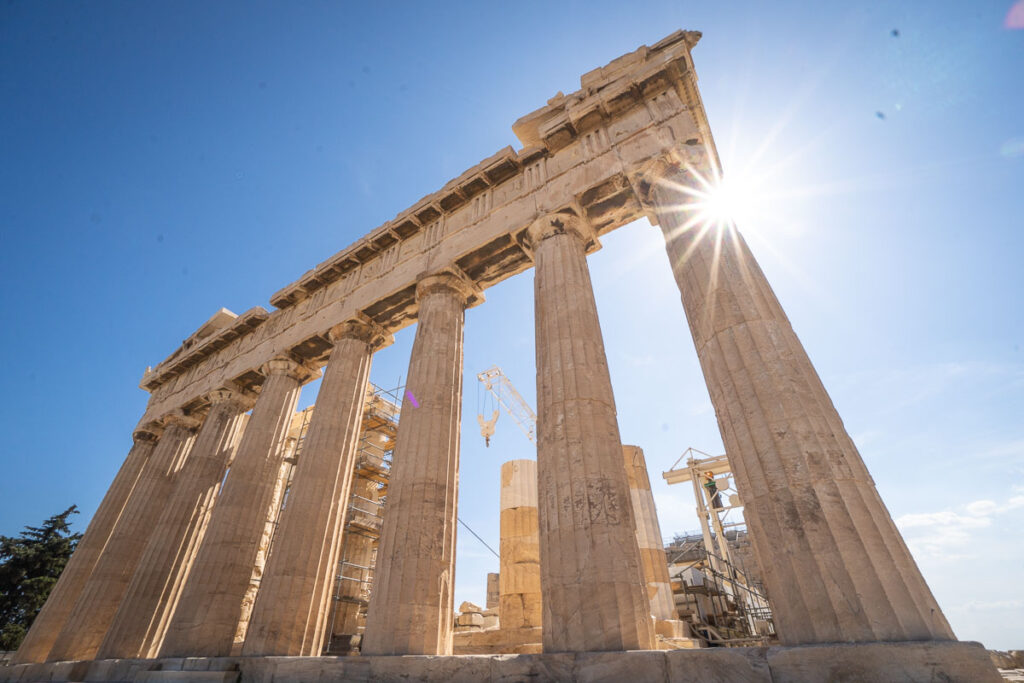16 Must-Visit Athens Historical Sites That Will Make You Rethink Ancient Greece

Want to check out the best Athens historical sites?
As you wander the charming streets of the Greek capital of Athens, memories of high school history seep back into mind. From the towering Acropolis to the winding alleys of the Plaka neighborhood, this city is a living, breathing museum of ancient civilizations. And it’s pretty cool to finally put a real-life image to old textbook readings.
Walk in the footsteps of mythic gods and legendary philosophers as Athens has been a cultural center for over 3000 years.
In this post, we’re exploring the must-visit historical sites in Athens, Greece. After spending more than a week roaming around Athens, by choice and because of an emergency root canal, I’ll take you through some of the most iconic Athens landmarks and lesser-known gems.
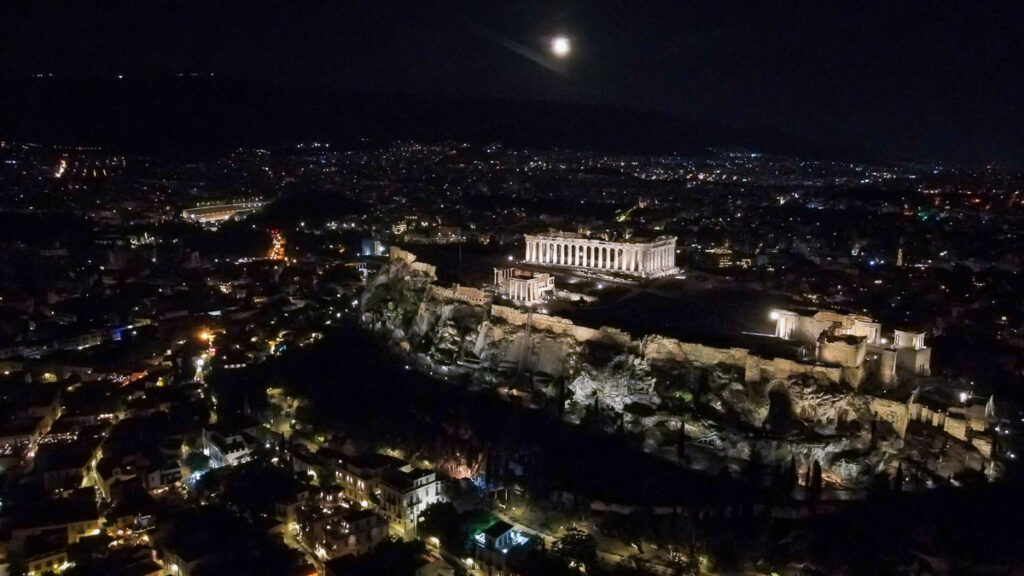
Tips for Visiting Athens Historical Sites
Ticket Admission Fee
Tickets can be purchased online here or at the entrance to each fee site. I recommend buying the combined ticket if you plan to visit the Acropolis and at least two other archaeological sites in Athens. This ticket type is valid for 5 days, costs around 30 euros, and grants entry to seven fee areas throughout the city.
How to Get Around Athens
Start in the city center at Syntagma Square, Acropolis, or Monistiri Square, where the most famous monuments are relatively walkable.
Otherwise, the metro or bus is the most convenient and cost-effective way to get around central Athens or from Glyfada or the ferry port, with fares starting at €1.20. All public transportation methods will only accept euros pre-paid from the teller machines. Official taxis are also readily available and can be called through Uber or Freenow.
Best Historical Sites in Athens
Acropolis
One of Greece’s most famous historical sites is the Acropolis, a hill that overlooks the city and is home to several ancient buildings, including:
- Parthenon
- Propylaea
- Erechtheion
- Temple of Athena Nike
- Odeon of Herodes Atticus
- Theatre of Dionysus
- Statue of Athena Promachos
- Acropolis Museum
The Acropolis is more than just a beautiful collection of buildings, dating back to the 5th century BC when it was constructed as a fortress to protect Athens from invaders. Once the center of Athenian life and culture, the Acropolis played a crucial role in the development of Greek civilization.
Travel Tip! Yup, you’re summiting that thing, and it is as unshaded as it looks. It’s best to go early in the morning or later in the afternoon to avoid crowds and a sunburn. The last entry is at 7:40 pm.
👉 You always learn more with an English-speaking Greek guide at historical ruins. Book this Athens Acropolis and Museum Cultural Guided Walking Tour.
1. Parthenon
By far, the most famous building on the site is the Parthenon, a temple dedicated to the goddess Athena. This structure is an architectural masterpiece, featuring impressive columns and intricate carvings depicting Greek mythology scenes.
Unfortunately, it got blown up in recent history, like in 1687, so instead of being fully recreated, it will just be restored. Surprisingly, there is a full-scale model in…Nashville, USA? Strange, but true.
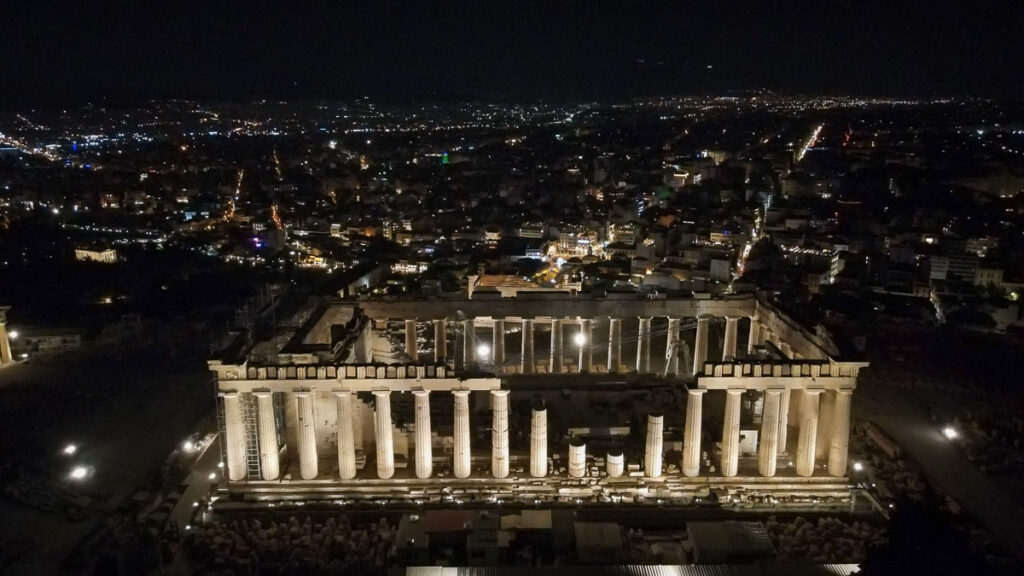
2. Propylaea
The Propylaea is the monumental gateway that serves as the entrance to the Acropolis. The purpose of this grand doorway was to impress visitors and act as a symbol of the power and wealth of Athens.
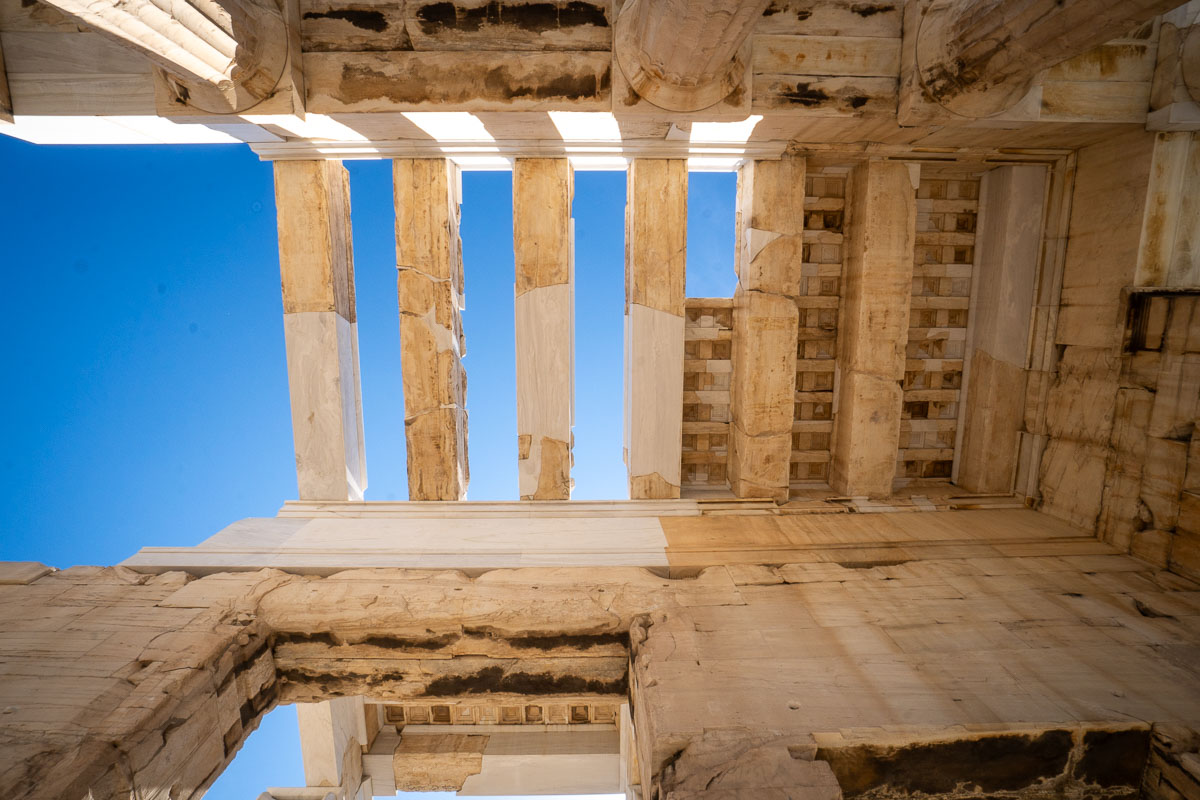
3. Erechtheion
The Erechtheion is a temple dedicated to several Greek gods, including Athena and Poseidon. Notice the famous architectural elements, Porch of the Caryatids, which features six sculpted female figures that serve as columns. The Erechtheion played a crucial role in Athenian life, serving as a site for religious festivals, state ceremonies, and political events.
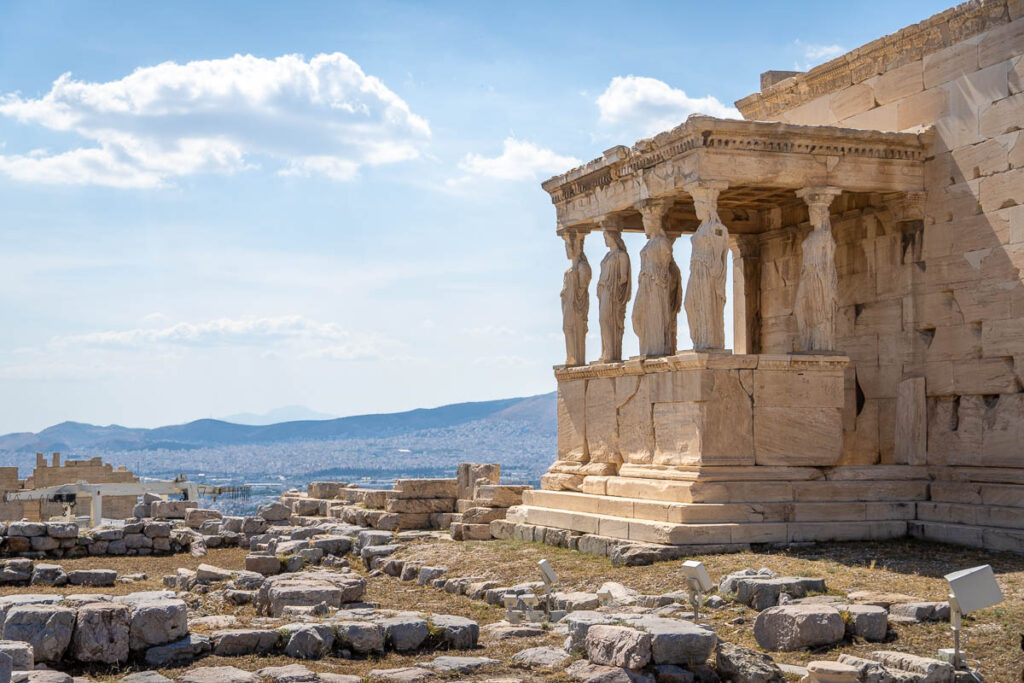
4. Theatre of Dionysus
On the way up to the summit, you’ll pass the Theatre of Dionysus. The Theatre of Dionysus was initially made of wood, but was later renovated with stone. It can surprisingly seat up to 17,000 spectators.
This ancient theatre is known as the birthplace of Greek drama and was the venue for the famous dramatic competitions held in Athens during the festival of Dionysus. In the Roman era, gladiators and animals fought for their lives.
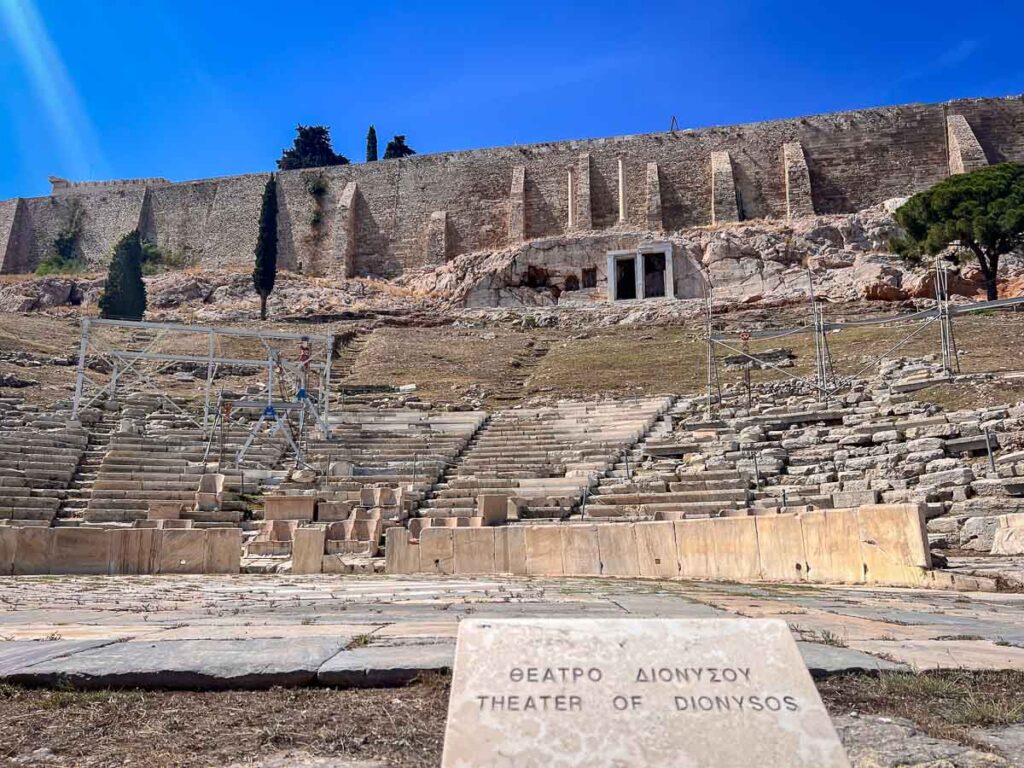
5. Odeon of Herodes Atticus
Located on the southwest slope of the Acropolis, this ancient theater was built by Herodes Atticus in 161 AD in memory of his wife. The Odeon of Herodes Atticus was used initially for musical events, competitions, and other performances.
Today, the Theatre of Dionysus hosts performances for the Athens Festival, symphonies to famous DJs.

Ancient Agora of Athens
Ancient Agora was the heart of ancient Athens for centuries, where people gathered to discuss politics, trade, and socialize. Here are some of the highlights to look out for when you visit:
6. Temple of Hephaestus
The Temple of Hephaestus is one of the best-preserved ancient Greek temples. It was dedicated to the god of metalworking, Hephaestus. The temple is made of marble and features 34 Doric columns. Inside, you’ll find a statue of Hephaestus and his wife, Athena.
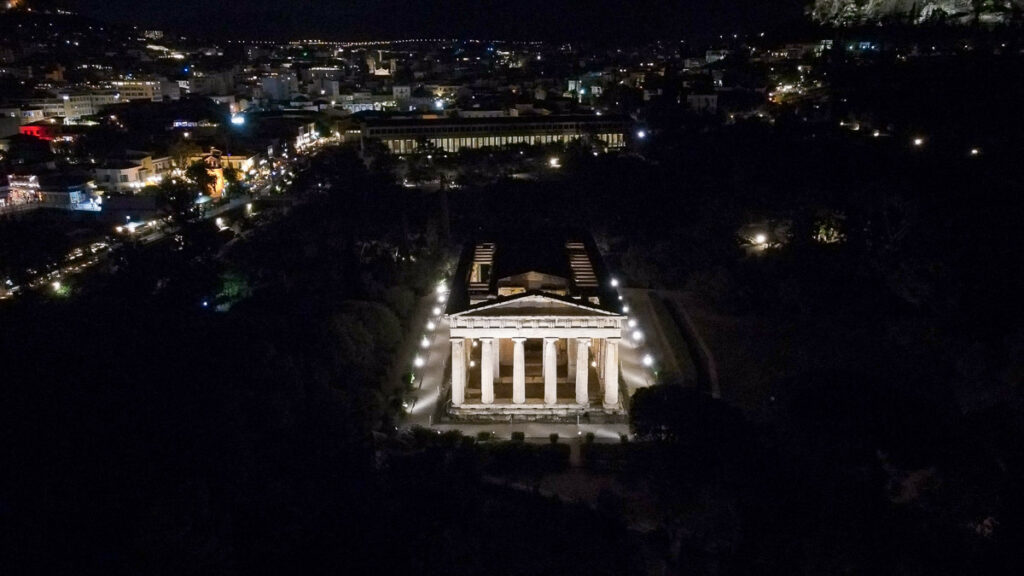
7. Stoa of Attalos
The Stoa of Attalos is a long-covered walkway used as a shopping center and a place for people to socialize. The stoa was destroyed in the past, but one of the few fully restored historical ruins in Athens. In the center, it houses a small Museum of the Ancient Agora, which displays artifacts found in the area, and you can see the first democratic voting ballot box.
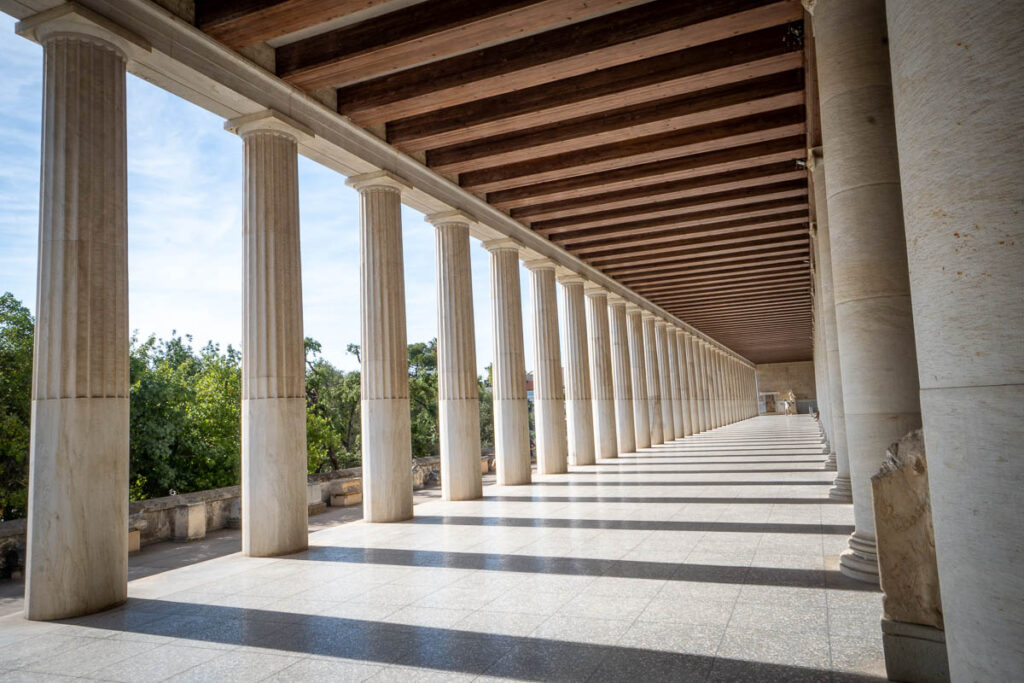
8. Roman Agora
Right next door, the Roman Agora was built to mimic the style of the Athenian Agora. It was once the center of commerce and trade, but there is not too much left, but a couple of columns.
One of the most notable buildings in the Roman Agora is the Tower of the Winds, an octagonal tower used as a weather vane, sundial, and water clock.
Another important building is the Gate of Athena Archegetis, a gate dedicated to Athena and served as an entrance to the Agora.
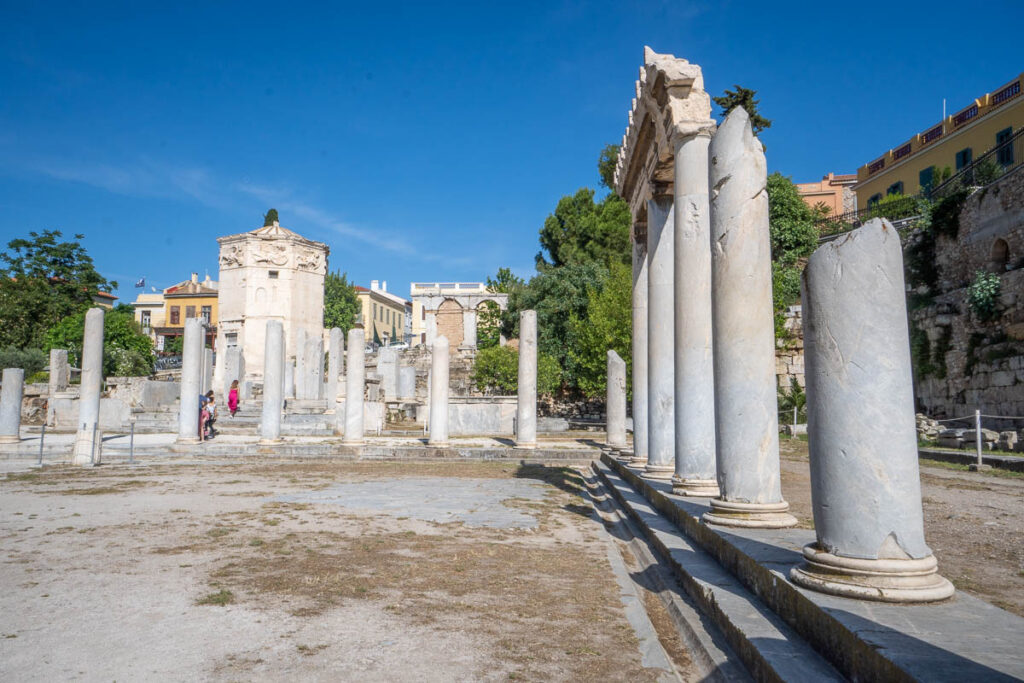
9. Hadrian’s Library
This ancient library was built by the Roman emperor Hadrian. It used to be a vast complex of reading rooms, lecture halls, and an extensive library with thousands of scrolls, combining Roman and Greek architectural styles.
The library was one of the most important intellectual centers of the ancient world, attracting scholars and philosophers from all over the Mediterranean.
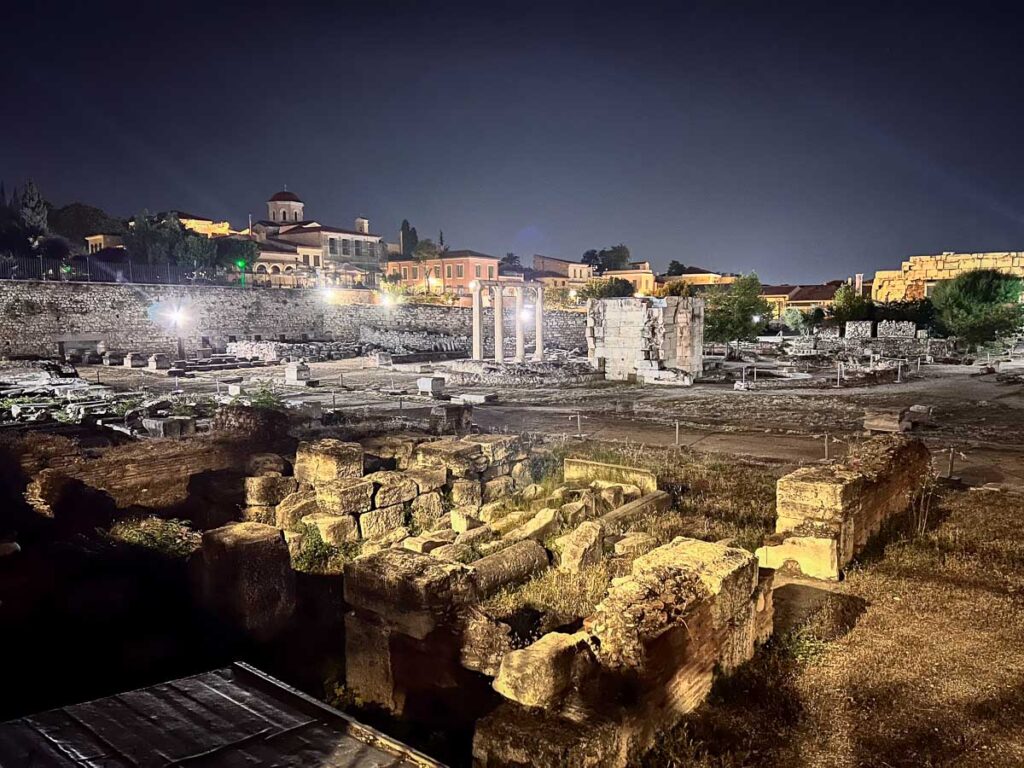
10. Temple of Olympian Zeus
Even though it is almost entirely covered by scaffolding currently, the Temple of Olympian Zeus is pretty impressive. You know, back in the day. Today, only a few of the columns remain standing, but each one is over 17 meters tall, and there used to be 104 of them.
This temple dedicated to Zeus took centuries to build and was designed to be one of the biggest temples ever. Entirely made of Pentelic marble, this temple showed the power and wealth of Athens.
The Temple of Olympian Zeus wasn’t totally finished until the 2nd century AD when the Roman emperor Hadrian decided to throw tons of money and energy into the temple’s completion, adding a massive statue of Zeus and a giant pool right in front of the temple.
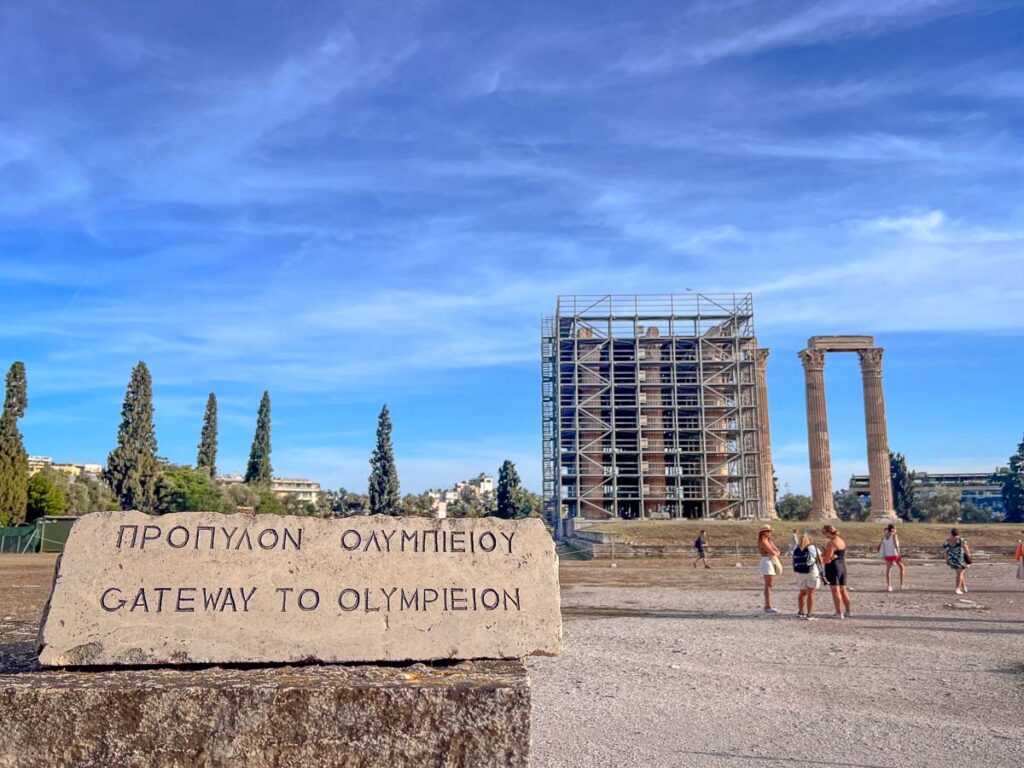
11. Panathenaic Stadium
Imagine this ancient stadium seated with 50,000 spectators, cheering at the runners, jumpers, and wrestlers of the first Olympic games ever.
Once one of the largest in the ancient world, the stadium has been restored beautifully and remains the finish line for the original Athens Classic Marathon that runs from the town of Marathon to Athens.
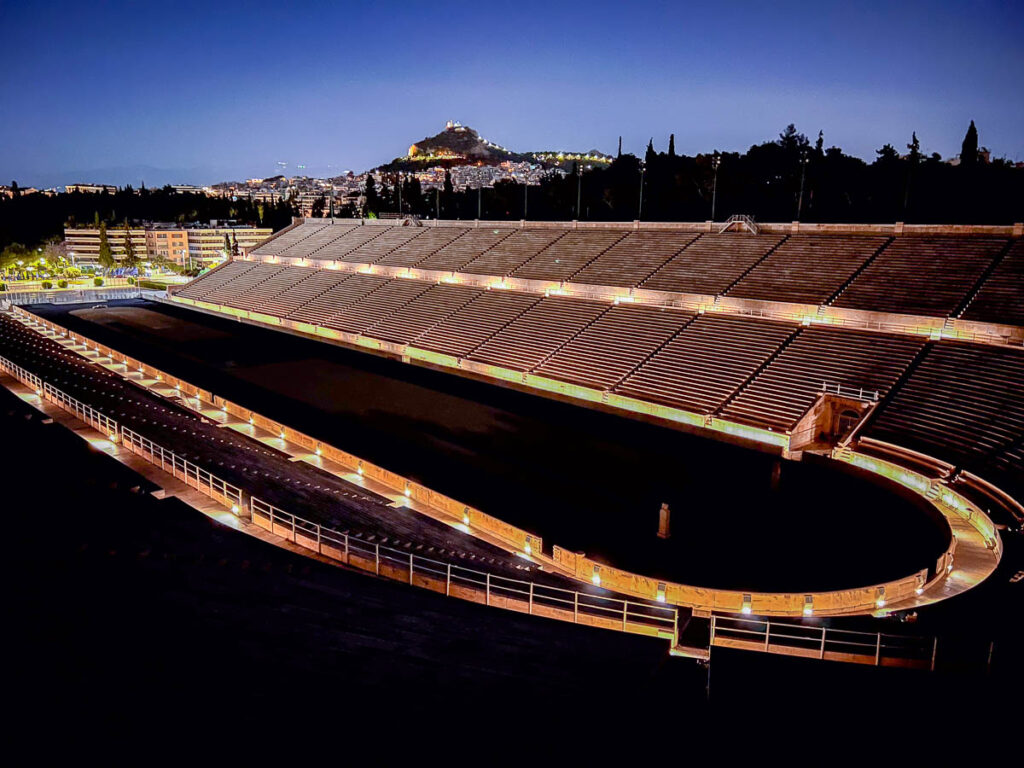
12. Kerameikos Cemetery
Walk amongst the ancient dead through the Kerameikos Cemetary. Dating back to the 12th century BC, this was the primary burial ground for Athens until the Roman times. The cemetery was divided into two parts: the inner Kerameikos reserved for the elite and the outer for the common folk.
One of the most striking features is the 10 meter wall built to protect the cemetery from invaders and to keep the dead inside. Also, several notable monuments are housed inside, like the Tomb of the Marathon Warriors and the Dipylon Gate.
13. Lykeion
You may have heard the name Aristotle before. Well, he founded the Lykein, also known as the Lyceum, to be a philosophical and scientific research school in 335 BC.
As you explore the Lykeion, stroll through the remains of the main hall, lecture rooms, and a colonnade. The site also has a large garden used for philosophical discussions and contemplation.
14. National Archaeological Museum
Not really a historical site, but if you want to put all the pieces together, this museum houses the most extensive collection of Greek antiquities in the world, with over 11,000 exhibits, including sculptures, pottery, jewelry, and more.
Explore the various galleries, each dedicated to a different period of Greek history, from the prehistoric era to the late antiquity period. In addition to the permanent collection, the museum also hosts temporary exhibitions, lectures, and educational programs.
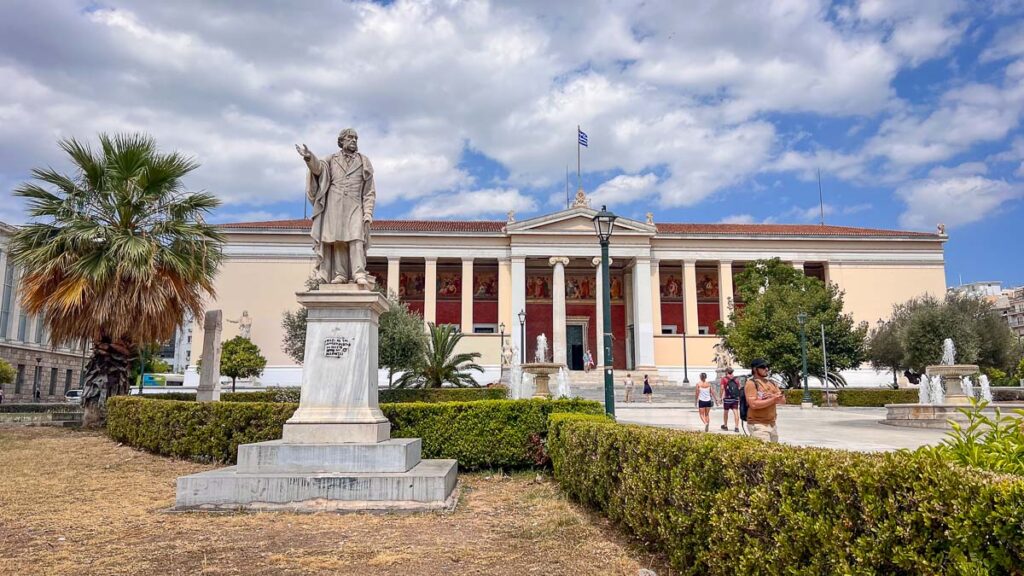
Many famous philosophers and scientists, including Aristotle, studied and taught there. The school was known for its emphasis on logic, metaphysics, and natural philosophy, and its teachings influenced Western philosophy for centuries.
Historical Sites Near Athens, Greece
15. Archaeological Site Mycenae
Located 150 km southwest of Athens, the Mycenaean civilization left behind a rich archaeological record, which includes impressive fortifications, palaces, and tombs.
Mycenae was a major center of power in the eastern Mediterranean from around 1600 to 1100 BCE. The most famous are the Lion Gate, the entrance to the Citadel of Mycenae, and the Treasure of Atreus, a massive Tholos tomb.
👉 Take a day trip to famous ancient sites like Mycenae and Epidaurus with transport and entrance ticket included.
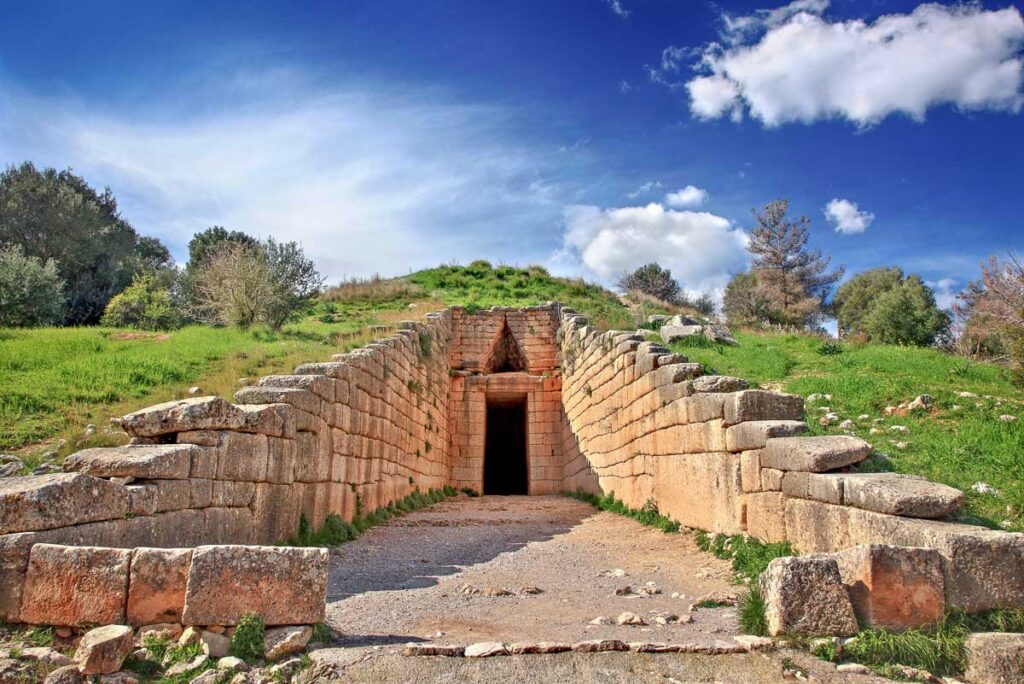
16. Archaeological Site of Sounion
About 70 kilometers away from the city of Athens, the Temple of Poseidon in Sounion is the site’s main attraction. Take a wild guess who it is dedicated to. Perched on a cliff overlooking the Aegean Sea, the temple is said to have been a landmark for sailors, who could see it from far out at sea.
Aside from the temple, the site also features the remains of the fortifications, the sanctuary of Athena, and the ancient theater.
👉 Skip renting a car or figuring out the bus by booking a private trip to Cape Sounion and the Temple of Poseidon to watch the sunset!

Where to Stay in Athens
If you’re visiting Athens for a few days to enjoy the city’s historical sites, everything from budget-friendly guesthouses to luxury hotels with excellent views are available. You just have to be careful what neighborhood you end up in. I’m one to know, because turns out picking the cheapest place meant we saw some real sketchy stuff on the sidewalks.
Electra Metropolis
⭐ RATING: 9.1 out of 10 Stars (6300+ reviews) | $$$
Seconds away from Plaka and Ermou and minutes away from Acropolis, the location and service couldn’t be better than booking 5 Star Electra Metropolis Hotel. Their modern-elegant rooms feature plush bedding and stunning views of the Acropolis. Eat a gourmet meal in-house or dip in their rooftop pool with panoramic views.

14 Reasons Why Hotel Athens
⭐ RATING: 9.1 out of 10 Stars (700+ reviews) | $$
If you’re looking for trendy decor and neon signs, 14 Reasons Why Hotel Athens delivers that vibe. This contemporarily-designed boutique hotel offers modern amenities and a cool atmosphere in the heart of downtown Athens. Enjoy spacious rooms with cozy beds, fast Wi-Fi, and an exceptional complimentary breakfast each morning.

Bedbox Hostel
⭐ RATING: 9.1 out of 10 Stars (1500+ reviews) | $
Stay in Athen’s Psiri neighborhood in the popular backpacker Bedbox Hostel. Sleep soundly in their minimalist-style, comfortable dorms just steps from the coolest bars and restaurants. But for those looking to save, use their communal kitchen to cook up a meal and make new friends in the common area.

Final Thoughts: Best Historical Sites in Athens, Greece
If nothing else, Athens is full of fascinating historical sites for hours of exploration. From the Acropolis of Athens to the Temple of Olympian Zeus, famous landmarks of ancient cemeteries, traditional Greek food tours in marketplaces, and stadiums abound.
Where Next in Greece?
I spent almost two months going around all of Greece. Check out these other posts to see if any of these destinations pique your interest.
- 16 Must-Visit Athens Historical Sites
- 8 Delicious Food Tours in Athens
- 11 Best Athens Private Tours
- Koufonisia Island Travel Guide
- Amorgos Island Travel Guide
- 7 Best Mykonos Private Tours
Have Travel Questions About Greece? Maybe I’ve Answered Them
| TRAVEL RESOURCES |
| ✈️ Find the best tours and activities with Viator to cross off your bucket list and create unforgettable memories 🏘️ Book your accommodation with Booking.com in advance and check availability on the days of your travels. 🧾 Rent a car in advance with Discovercars for those epic road trips at the best price. |
Catherine Xu is the founder and author of Nomadicated, an adventure travel blog that helps travelers cross off their bucket list. Since discovering traveling in 2015, she has lived and journeyed to 65 countries across 5 continents and vanlifed the west coast USA for 2+ years. These days, she splits her time in Southeast Asia and California while sharing her travel stories and resources based on first-hand experiences. Catherine's other works has been referenced in major publications like MSN, Self, and TripSavvy.


